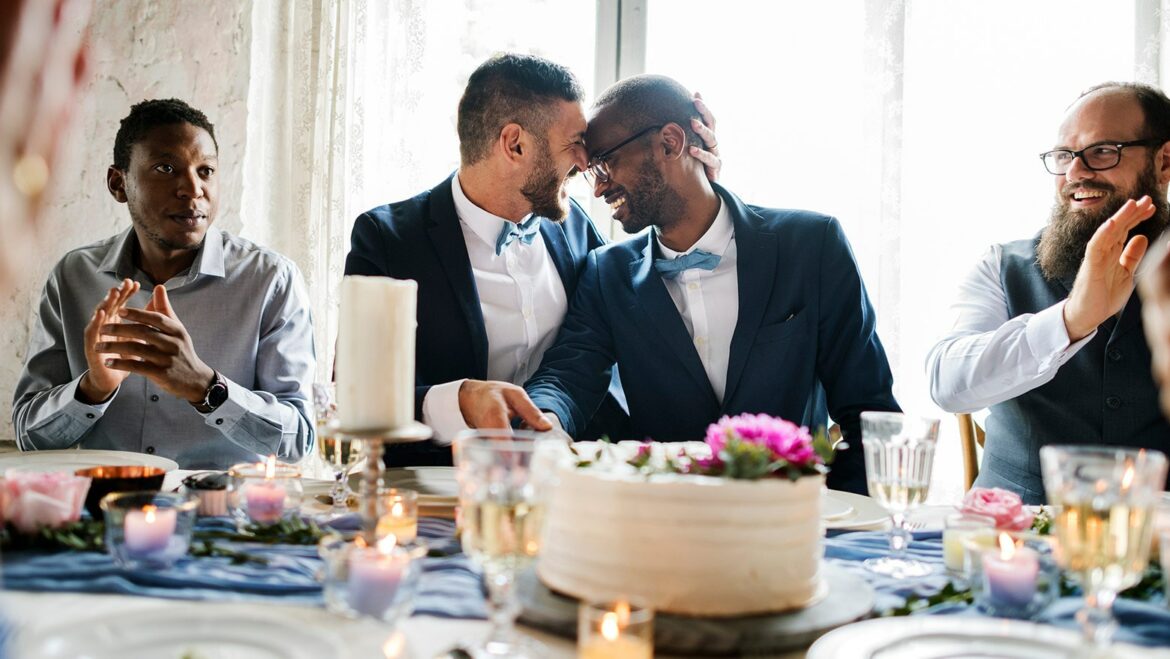Last Updated on January 10, 2025 by Joy Editors
In the US, the average couple spends roughly $30,000 on wedding expenses. Factors such as vendor and personal preferences impact the overall cost.
Planning a fairytale wedding can be a dream come true, but the price for one is sometimes a villain!
According to The Wedding Report, the average wedding costs $30,119 in the U.S. But don’t let the numbers scare you. The total cost of a wedding can vary based on the state and the couple’s plans and priorities.
For example, couples may decide to have a large, extravagant celebration costing around $100,000 or opt for an intimate city hall elopement at $2,000. Whichever route you decide to take, our guide serves as a roadmap to help navigate wedding costs and learn tips on sticking to your budget.
Key Takeaways
- The total cost of a wedding in 2024 is $30,119.
- Factors such as location, vendors, number of guests, and personal preferences can affect the overall wedding cost.
- At over 30% of the total cost, venues are the most expensive wedding feature.
Average Wedding Cost by State
You’ll notice that wedding venues and services charges vary by state, which largely influence the cost of living. Here’s a helpful breakdown of the average cost of a wedding across different states.

Now that you have an idea of wedding prices where you live, let’s take a deeper dive into the most common expenses.
Wedding Cost Breakdown
Other wedding costs, such as the venue and catering, will also vary due to service demand and availability. Two big drivers behind venue rental prices are real estate and labor costs, factoring in staffing needs for setup, catering, and the rent or mortgage they pay for the property.
Here’s an example of a wedding budget breakdown for the average wedding with 100 guests.

Venue
When it comes to wedding venues, you can expect to pay around $11,600 to $14,300, or over 30% of the total wedding cost, according to The Wedding Report. This, of course, is based on the location, size, type (hotel ballrooms, historic mansions, vineyards), and number of guests.
Catering
For 100 guests, the cost of wedding catering ranges between $8,500 and $10,000. Components that influence the overall price include the food service options, alcohol, reception table accessories, and, of course, the wedding cake.
Wedding attire
While many factors affect the overall cost of a wedding dress, you can expect to pay anywhere from $1,000 to $20,000. Tuxedos and suits, fortunately, are often much more affordable and are normally available to rent for about $300. However, if you opt for a bespoke suit, prices can range from $1,000 to $5,000.
For any wedding outfit, designer labels and alterations will cost more. Also, keep in mind that prices typically include tailoring, which can take several weeks.
Photography & videography
Most weddings today include a photographer and videographer to capture their wedding highlights. Depending on the hours of coverage, editing needed, and add-on packages, wedding photography costs can range from $1,000 to $10,000.
Similarly, wedding videography costs around $1,000-$7,000, with some offering the service together with photography as a package.
Wedding flowers
The average cost of wedding flowers is $2,200, where factors such as floral arrangements, centerpieces, and bouquets will affect the price. Floral budgets typically account for 8-10% of a wedding’s total cost.
Wedding DJ and entertainment
The price of a wedding DJ costs around $1,600 to $2,200, on average, for a 4- to 6-hour wedding reception. A few cost factors to consider are the DJ’s or band’s size, experience, and service hours.
Wedding invitations/stationery
The average cost of wedding invitations is $5 to $8 per guest, or $500 to $800 for a stationery suite for 100 guests. Factors such as custom designs and printing materials will affect the overall price. In addition to invites, a wedding stationery suite also commonly includes:
- Save the Dates: Cards sent out well in advance to inform guests about the wedding date and location.
- RSVP cards: Response cards accompanying the invitations for guests to confirm their attendance and other information.
- Enclosure cards: Confirmation cards for guests that detail the accommodation, transportation, dress code, and other relevant information.
Other related expenses
Additional wedding costs to account for include pre-wedding tasks and post-wedding activities:
- Wedding planner: $2,000
- Wedding rings: $500+ for each
- Transportation: $700+
- Officiant fees: $500+
- Hair and makeup: $500+
How to Save Money on Your Wedding
During the wedding planning process, you and your fiancé should solidify a wedding budget as early as possible. This way, you’ll know where you stand financially and can cut costs when necessary. Cash funds are also increasingly popular options for modern weddings. Instead of traditional gifts, you can set up a cash wedding registry for monetary gift requests, explaining to guests that their contributions will help cover your honeymoon and other related expenses.

Here are other ways you can save money on your wedding:
- Masterful negotiation: Be sure to get quotes from multiple vendors and compare pricing. Don’t be afraid to negotiate for what you want!
- Downsizing the guest list: Your guest count will heavily influence the venue size, catering costs, and nearly every other aspect of the wedding. Consider reducing invites to close family and friends.
- Scheduling strategically: Consider off-season weddings or weekday ceremonies. These periods are less demanding for venues and, therefore, typically more affordable.
- Exploring alternative venues: Unorthodox locations, like restaurants, parks, and private residences, are typically budget-friendly venues. Some of these spots may even be available for free.
- DIY and delegation: Consider skipping the DJ and curate your own playlist for the reception. You can also enlist crafty loved ones to make centerpieces and wedding favors.
- Complementary features: Take advantage of wedding planning platforms that offer free digital invitations to send guests instead of paying for physical ones.
Fortunately, most wedding planning websites like Joy are free to use, including numerous tools and resources to help you save and budget for your big day.
Wedding Planning Made Easy With Joy
You don’t have to break the bank for your big day to be perfect. With smart planning, a little creativity, and the right resources, you can have a dream wedding within your budget.
With Joy, you can save time and money on wedding planning. Use our platform to create and customize a free wedding website, manage and automate RSVPs, set up a wedding registry, and more. Best of all, you can manage everything directly through the Joy App.
When it comes to wedding planning essentials, Joy has everything you need, all in one place.


